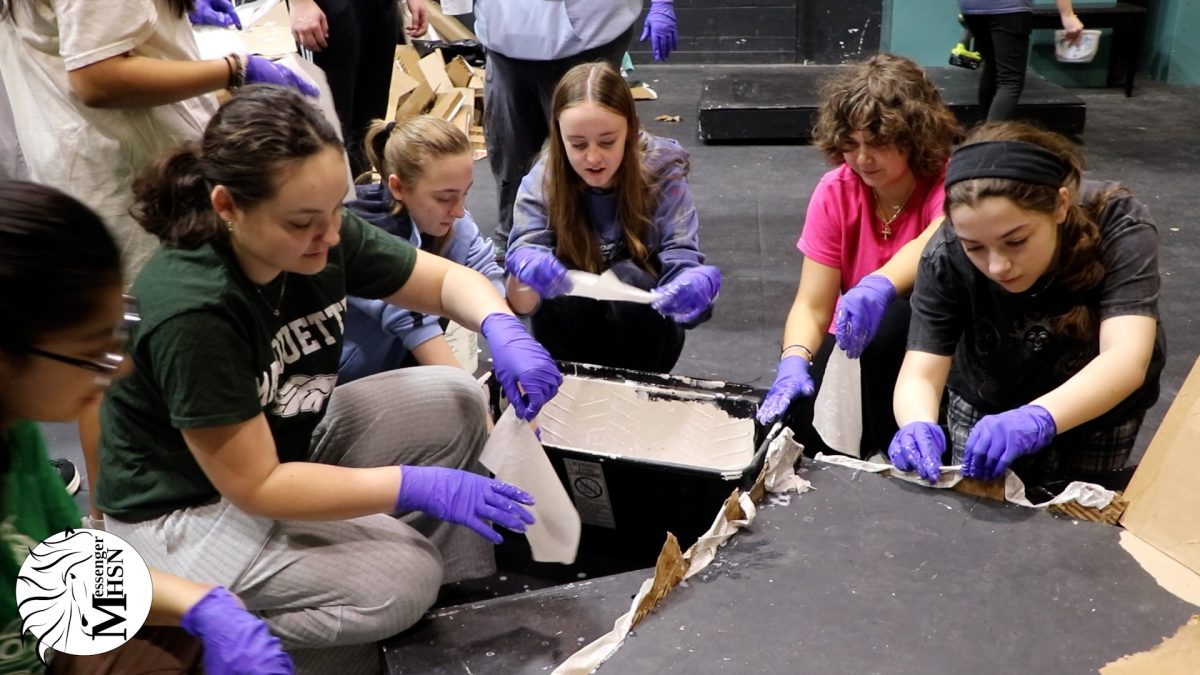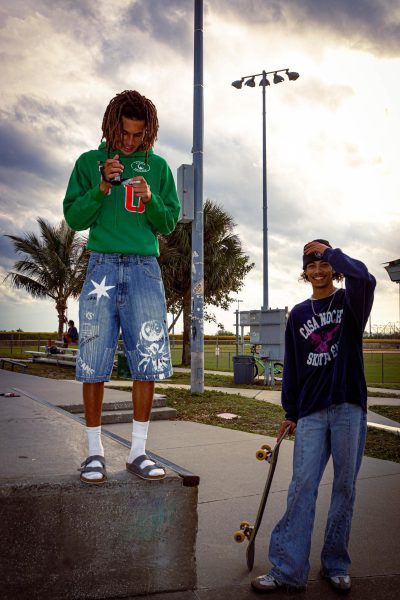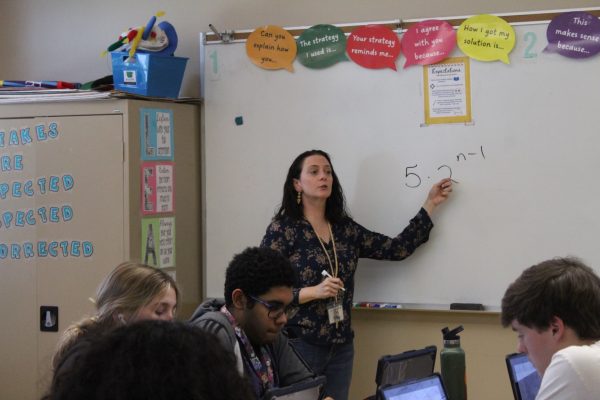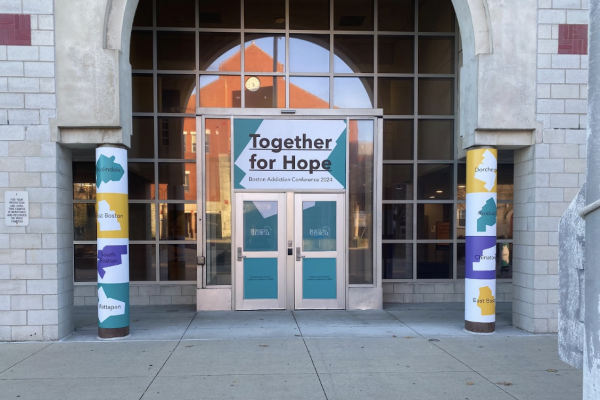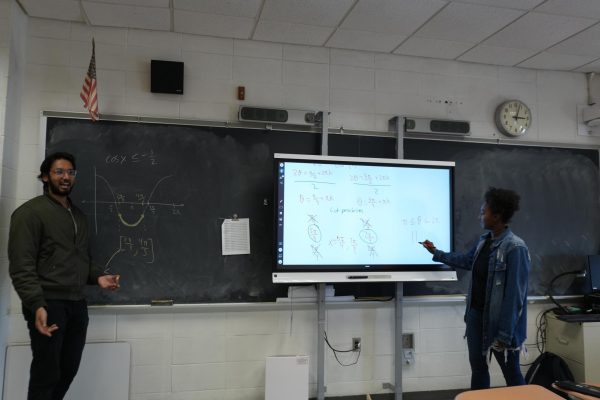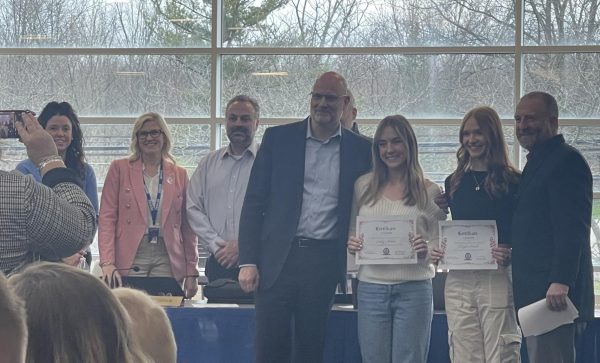Students, staff share their stories for Hispanic Heritage Month
photo courtesy of Natasha Fischer
drama teacher Natasha Fischer visited her relatives in Puerto Rico in May of 2021. Fischer has three children and takes them to Puerto Rico as often as she can to embrace them in the culture. “They actually play a game in my house called going to Puerto Rico where they pack a bag and get on an airplane and go and eat rice and beans,” Fischer said
October 8, 2021
South of the United States resides several Latin American countries, each with individual cultures and identities that unify their regions. As time has gone on, many immigrants from these countries have moved to the United States in search of work opportunities and the American Dream. Hispanic Heritage Month, which began on Sept. 15 and ends on Oct. 15, is described as a celebration of Hispanic culture and people.
While only 3% of Lafayette’s make-up is Hispanics/Latinx according to the Public School Review, approximately 55 out of 1,816 students, some of those students and staff are still very connected to their Hispanic heritage and continue to honor traditions passed onto them by their ancestors.
Hopson experienced major change when moving from Colombia to United States
Sophomore Nicole Hopson, a Colombian immigrant, moved to the United States when she was 11 years old after being adopted. Hopson has since changed large parts of her identity, including her name.
Hopson was born in Cartago, Colombia, and grew up with her grandma until 2nd grade. Hopson has never met her birth father and has very vague memories of her birth mother, who was not able to appropriately care for her. By the 2nd grade, Hopson’s grandmother became ill and was also unable to care for Hopson.
“My grandmother took care of me, so for me she was like my mom. I had to take care of her because we didn’t have anyone else,” Hopson said.
In 4th grade, Hopson remembers her grandmother getting so sick, she was sent to live with another family for a night.
“We went to the hospital, and the police said a kid like me couldn’t stay in the hospital, so they took me to this family for one night,” Hopson said. While she thought it was only supposed to be for a night, she ended up being placed into the foster care system the next day because of her living conditions and her grandma’s illness.
Hopson lived with a foster family in Tulua for around three years, and her grandma was able to visit her. After her grandmother passed away, she ended up living with two other families in Tulua before she was adopted and moved to the United States.
“They called me and said that the family wanted to keep me and make me theirs and that was really emotional. Now it’s going to be four years [living in the United States] at the end of September,” she said.

As Hopson had never learned how to speak English before to moving to the United States, her first day of 6th grade was difficult.
“I remember my first day of school. It was really, really interesting because everyone was speaking in English. My first class was Language Arts and this girl named Ashley literally helped me with Google Translate,” Hopson said. “After that we had to go to our lockers, and I didn’t know how to open a locker because I didn’t have that in Colombia. I had to get a teacher to use the key to open the locker, and I was late for every single class.”
Eventually, Hopson was able to learn English by listening and by watching movies and TV shows.
Another challenge she encountered after moving to the United States was adapting to American culture.
“I remember I didn’t like any food. It was really weird. I felt like the only things I was eating were hamburgers. I got used to it, but it’s not the same thing. I like Colombian food,” Hopson said.
She also remembers feeling judged for the way she eats fish.
“My parents took me to this place where they eat Colombian food. I remember I got a big fish. Normally in Colombia, we eat the eyes of the fish, so I was eating it like a Colombian girl. They were looking at me like, ‘why would you eat the eyes? Who eats the eyes?’ It’s normal [for me],” Hopson said.
With those challenges she had to face, however, came a lot of opportunities as well.
“In Colombia the education is good, but not so good [compared to the United States]. Here, the schools are really big. We also do sports, and we don’t have that in Colombia so much, ” she said.
She plans on visiting Colombia again when she turns 18, but she thinks she will always live in the United States.
“I feel more safe in the United States. Even if I miss my country, I know there’s a lot of dangerous stuff. And right now, how the country is, it’s really dangerous,” Hopson said.
The biggest challenge she has faced, however, could be changing who she was to adapt to a new culture. Hopson was originally named Jeiri Miriller Gonzales until she decided to name herself Nicole and take on her adoptive father’s last name, Hopson.
“I have a new family, but I had to change my whole world. I got used to this new country with new people. I changed my name, my language. I feel like that was my whole thing. I had to change pretty much everything of who I was to become a new person and start a new school with new people, “ she said.
Jimenez-Diaz learns the reality of an American high school after being raised in Mexico City
Since he moved to the United States from Mexico City on Aug. 16, sophomore Diego Jimenez-Diaz has found the American high school experience to be very different from some of his original expectations.
Jimenez-Diaz moved to the United States because of the current situation where he lived in Mexico, which he said is very dangerous and corrupt compared to Wildwood.
“Here it’s more peaceful. In Mexico, when I go to walk outside, the normal [fear] for someone to go and take me and never see my family again. Here I can go walk normally and hear music and everything is okay,” Jimenez-Diaz said.
With a population of over 21 million residents, Mexico City is a stark contrast to Wildwood. For Jimenez-Diaz, there are many conveniences to living in a suburban neighborhood.
“In Mexico City, we have some green spaces but they are disappearing because [people] want to build apartments and what they do is burn the whole area where they want to build. It’s really bad because the air of Mexico is the smoke of the fire. Also in Mexico, we have a lot of traffic. Every time, you are like ‘this smells horrible, what is it?’ [It’s] the air,” Jimenez-Diaz said.
Moving to the United States has had other benefits for Jimenez-Diaz as well, who was told by his father that learning English would open up doors for him in the future.
“In public school in Mexico, you only start learning English in secondary school,” he said. “That’s why my father told me, ‘hey, I’m paying for a private school for you to have a good level of English, math, and everything.’ That’s why I have a better level of English. I studied [English] for eight years of my life.”
Still, Jimenez-Diaz had many questions when moving to the United States, specifically about if he would be able to celebrate his traditions. While he expected to only be able to celebrate typical American traditions, Jimenez-Diaz realized he could still celebrate some of the traditions with which he grew up.
“My family that is in the U.S. told me that I must not do something that is normal in Mexico. At the beginning, I was wondering if I could celebrate the Day of the Dead. They said it was okay, that it was a tradition here. Oh okay, so I could celebrate my traditions,” Jimenez-Diaz said. “I thought I couldn’t celebrate my traditional things, because this is a completely new culture. I thought I only can celebrate Thanksgiving, Christmas and Halloween.”
One tradition Jimenez-Diaz recently celebrated was Mexican Independence Day, which is celebrated on Sept. 16. Typically, there is widespread celebration for this holiday in Mexico.
“On the day of independence at midnight, the president shouts ‘viva Mexico’ and the people come out to shout ‘viva Mexico’. The government organizes a parade with the military, the police and floats,” Jimenez-Diaz said.
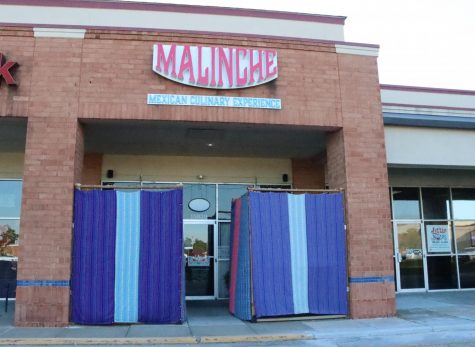
Instead of a parade, he celebrated Independence Day with his family at his uncle’s Mexican restaurant, Malinche Mexican Culinary Experience.
“This year what I did was help my family in a Mexican food restaurant. I helped them by being a waiter and we served [pozole, chile en nogada, panbazos, etc],” he said.
After watching TV shows that depicted a stereotypical American high school experience, Jimenez-Diaz had developed a different idea of the United States.
“A guy that came from another place came to this high school and they’d start bullying him because he came from another place, another culture,” he said.
Now, Jimenez-Diaz realized that idea is more of a stereotype than it is a reality.
“At the beginning I was like, ‘they will bully me because I’m Mexican,’ and then I came here, and everything was normal,” he said.
Drama teacher honors her multicultural identity, hopes to inspire Hispanic students
As a first-generation citizen, drama teacher Natasha Fischer has learned to honor both her Puerto Rican heritage and American culture, hoping to serve as a role model for first-generation students struggling to connect with their heritage.
Fischer’s parents moved to the United States when her father began doing rotations as an interventional radiologist at SSM Health St. Louis University Hospital. Fischer was born in St. Louis and has lived in the United States her entire life, but is able to stay connected to her roots by visiting Puerto Rico once a year. Her last visit was in May of 2021, after she was unable to visit for a year because of COVID-19.
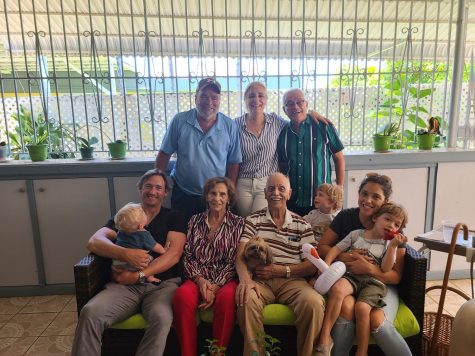
“It’s been harder with COVID. We finally got to go this last May and actually see my grandparents and my family which was so huge. That was pretty exciting,” Fischer said.
Fischer’s identity includes both of her cultures; the one she grew up with and the one her parents and relatives have given her. As media has evolved to include more individuals from different cultures, Fischer has begun to feel more represented in her Puerto Rican identity.
“I’m starting to see my culture more in the media, more in TV, film, In The Heights came out, It’s been nicer to see myself in things now,” Fischer said.
While Fischer now embraces her diversity, she remembers what it was like feeling different for the first time.
“Being Puerto Rican, nobody understood that. I tell the story of growing up, I wore chanclas [sandals]. If you have a Hispanic mother, you know what a chancla is. So, I went to school one time and said something to a kid about my chancla, and the kid was like, ‘What are you talking about? What are you saying?’ Everybody knows what a chancla is, and I didn’t understand [how they didn’t]. That was the first moment that I was different, and I understood I was different because they called me out,” Fischer said. “I was in Kindergarten or 1st grade, and I remember that story so vividly. When I retell it, I can smell the classroom, I can see the kids, I can feel that feeling that was there. That was the first time I ever thought I was different, and then I kind of adapted to society, as people do.”
As Fischer taught herself to adapt to being different, however, she realized she lost a part of her heritage.
“It wasn’t until college I decided to minor in Spanish and I started to realize that I had let my identity go from that and I just kind of adapted to the world that is white West County, that I was living in,” she said.
Fischer did not want to lose her heritage, and she began embracing herself in her Puerto Rican roots as best she could. It had always been a part of who she was, but now she was able to fully understand and embrace the culture her parents and ancestors grew up in.
“When I went and started diving in and realizing that this is who I am and this is who I love about my life. The music, the life, the food, everything. It’s who I am and for so long I hid that because I needed to adapt,” Fischer said.
Still, she recalls changing who she was to be able to fit in.
“My sister and I used to have a conversation about how I used to straighten my hair all the time. That’s what we were supposed to do to adapt. My big, frizzy curly hair, I didn’t want people to see that. It was not attractive to me. I wanted it to be smooth and long. Now I look at it and I’m like, ‘no, this is who I am,’” she said.
Fischer’s realization has allowed her to be a role model for other Hispanic students growing up in Lafayette, showing students how to embrace who they are.
“Now I’m starting to use my words and hopefully help students who are in this school and don’t have a whole lot of Latinx people to lean on. I hope I can be that voice for [them] and help them see it’s a beautiful, wonderful culture, and let’s keep it alive,” Fischer said.
This story was originally published on The Lancer Feed on October 1, 2021.











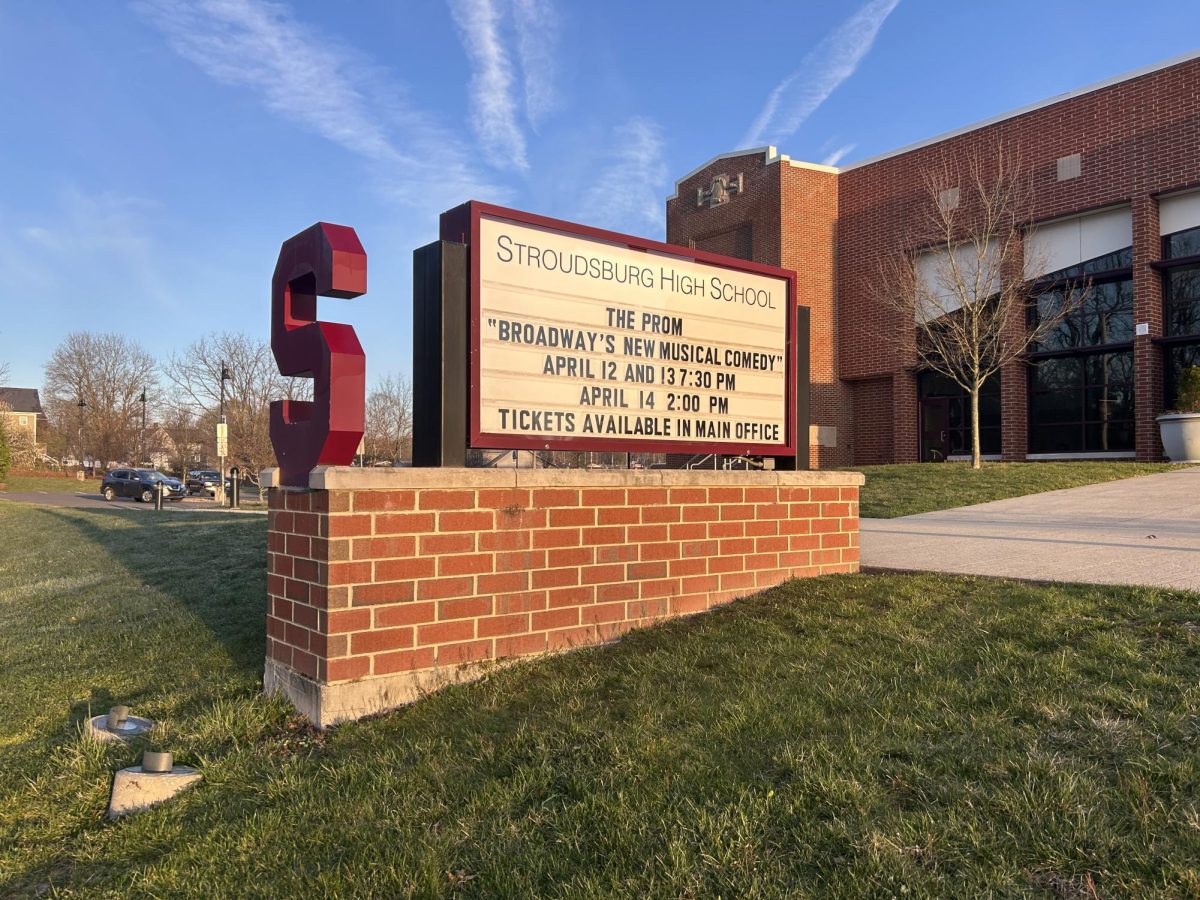
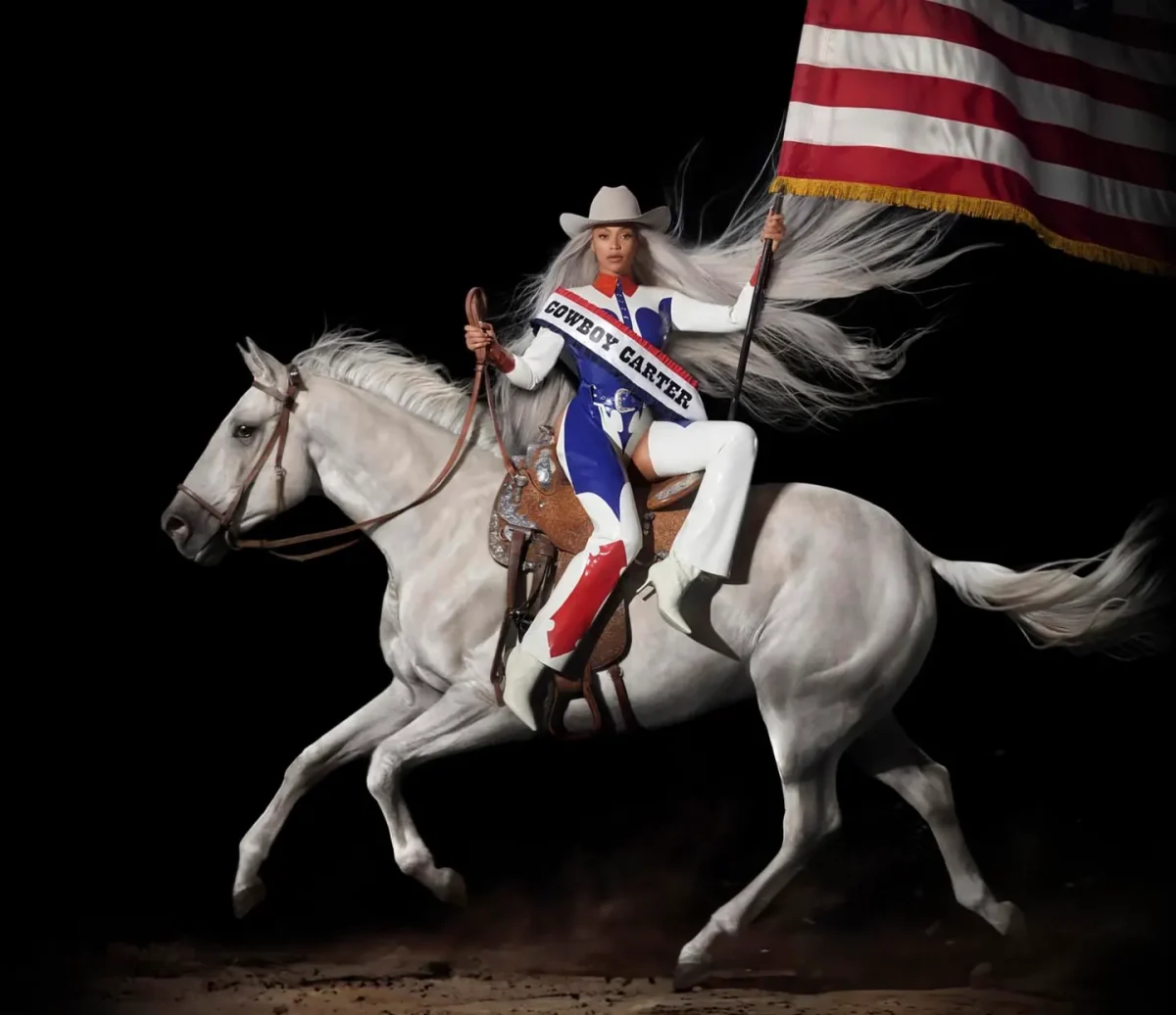















![IN THE SPOTLIGHT: Junior Zalie Mann performs “I Love to Cry at Weddings,” an ensemble piece from the fall musical Sweet Charity, to prospective students during the Fine Arts Showcase on Wednesday, Nov. 8. The showcase is a compilation of performances and demonstrations from each fine arts strand offered at McCallum. This show is put on so that prospective students can see if they are interested in joining an academy or major.
Sweet Charity originally ran the weekends of Sept. 28 and Oct. 8, but made a comeback for the Fine Arts Showcase.
“[Being at the front in the spotlight] is my favorite part of the whole dance, so I was super happy to be on stage performing and smiling at the audience,” Mann said.
Mann performed in both the musical theatre performance and dance excerpt “Ethereal,” a contemporary piece choreographed by the new dance director Terrance Carson, in the showcase. With also being a dance ambassador, Mann got to talk about what MAC dance is, her experience and answer any questions the aspiring arts majors and their parents may have.
Caption by Maya Tackett.](https://bestofsno.com/wp-content/uploads/2024/02/53321803427_47cd17fe70_o-1-1200x800.jpg)
![SPREADING THE JOY: Sophomore Chim Becker poses with sophomores Cozbi Sims and Lou Davidson while manning a table at the Hispanic Heritage treat day during lunch of Sept 28. Becker is a part of the students of color alliance, who put together the activity to raise money for their club.
“It [the stand] was really fun because McCallum has a lot of latino kids,” Becker said. “And I think it was nice that I could share the stuff that I usually just have at home with people who have never tried it before.”
Becker recognizes the importance of celebrating Hispanic heritage at Mac.
“I think its important to celebrate,” Becker said. “Because our culture is awesome and super cool, and everybody should be able to learn about other cultures of the world.”
Caption by JoJo Barnard.](https://bestofsno.com/wp-content/uploads/2024/01/53221601352_4127a81c41_o-1200x675.jpg)



